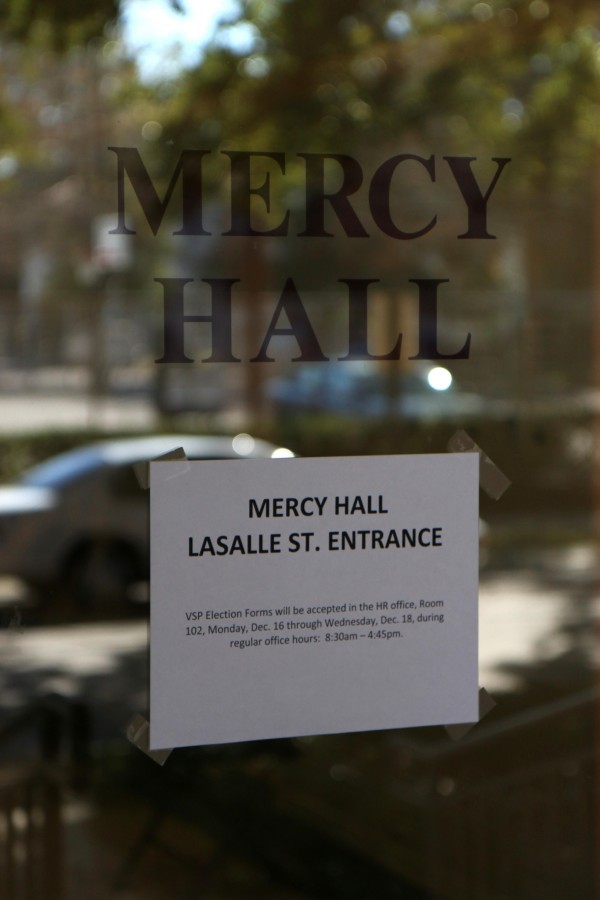Election period for voluntary severance program begins
A sign on the entrance to Mercy Hall directs applicants to the office of human resources. The election period for the volunteer retirement program began on Monday, Dec. 16.
December 16, 2013
Loyola employees who camped out in the corridors of Mercy Hall over the weekend were allowed to officially declare interest in the voluntary severance program on the morning of Monday, Dec. 16.
The 8:30 a.m. opening of the department of human resources marked the official start of the election period for the voluntary severance program, a time “for eligible employees to submit intention to elect into the program,” Meredith Hartley, director of public affairs, said.
The program, which is expected to reduce the $7.5 million budget deficit for this academic year by $1.4 million, is being offered to employees who are both over 55 years of age and have completed at least 10 years of full-time employment at Loyola as of Dec. 31, 2013, the Rev. Kevin Wildes, S.J., said in an email to university employees following approval of the plan on Friday, Oct. 18.
As of Dec. 6, 102 tenured faculty members, nine extraordinary faculty members and 82 staff members were eligible for the program, Wildes said in an email.
Hartley said that applications are being accepted in the office of human resources during its regular 8:30 a.m. to 4:45 p.m. business hours from now until Wednesday, Dec. 18.
In the Dec. 6 email, the Rev. Kevin Wildes, S.J., revealed revisions to the monetary caps set by the Board of Trustees for each category of eligible applicants: “$4,642,200 for tenured faculty; $180,600 for extraordinary faculty; and $1,414,000 for full time staff.”
These numbers reflect an increase of $297,000 in the allotted funds for tenured faculty members, as compared to the figures released in Wildes’ Oct. 18 email.
Tenured faculty members who participate in the program will receive “a lump-sum equal to 1.5 times the employee’s annual base salary in effect on the date participation in the Program is elected,” Wildes said. Non-tenured faculty and staff members will receive payment equal to 1 time their annual base salary, he said.
Wildes‘ official statement also said that “Medicare, FICA and other applicable income tax withholdings will be deducted from the payout amounts given to participants. Benefits for participants in this Program will be treated in the normal fashion for retirees as detailed on the University’s Human Resources website.”
Ross Matthews, director of human resources, said that those who elect into the program will find out if they will be selected for participation “in about a week.”
After the election period, the university will be able to tell how much money, if any, is left over in each category cap, Matthews said.
Hartley said that once those numbers are in, Wildes will have the discretionary authority to move money between caps as he sees necessary through an ad hoc executive committee of the Board of Trustees.
Wildes was granted authority to do so at the Dec. 5 and Dec. 6 meetings of the Board of Trustees, according to Wildes’ Dec. 6 email.
This is all in attempt to “provide more access to those eligible employees who wish to take advantage of this opportunity,” Wildes said in the email.
Matthews said that faculty admitted into the program could elect to depart from the university on either Jan. 2, 2014 or Aug. 1, 2014. He said that there has been worry that a large amount of faculty members would leave at the start of January, but he anticipates that “most of them will stay through August 1.”
Wildes said that the purpose of this program’s implementation is to “facilitate the transition for long-serving employees who may desire to retire from the University; and to provide an opportunity for the University to realize budgetary savings through position restructuring or modification, or possibly through position elimination.”
Topher Balfer can be reached at [email protected]







